Understanding Bed Bugs: Wings, Flight, and Myths Explained
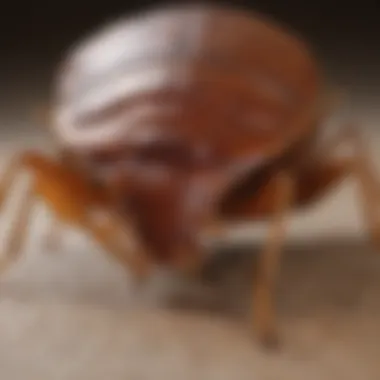
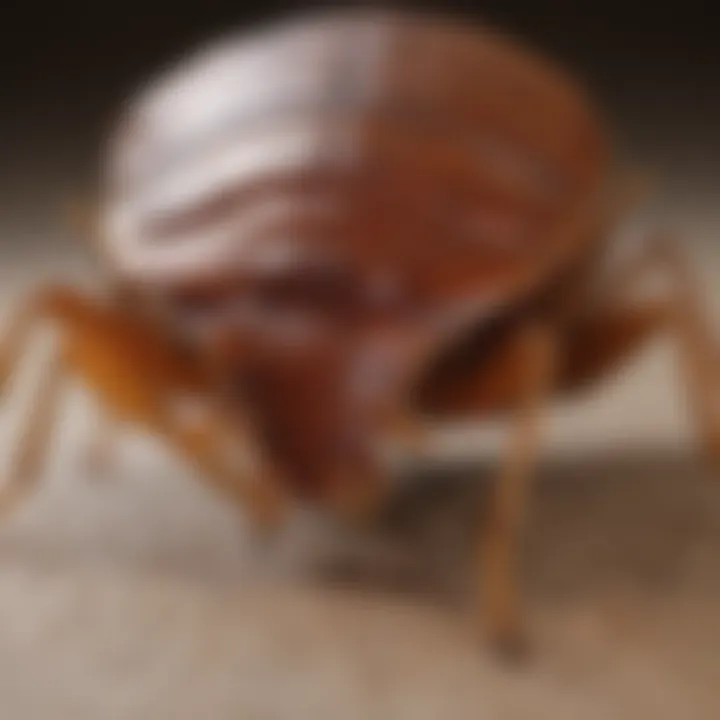
Animal Species Profile
Preface to the animal species
Bed bugs, scientifically known as Cimex lectularius, are small, parasitic insects that primarily feed on human blood. These creatures have become a significant concern in both residential and commercial settings. Their impressive resilience to various conditions makes them a notorious pest. Bed bugs often lurk in the crevices of beds, furniture, and other places where humans may spend time, such as hotels or public transportation systems. While many might assume their dwindling numbers made them less of a threat, in recent years, there has been a resurgence in infestations.
Physical characteristics and appearance
Bed bugs exhibit several distinctive characteristics that aid in their identification. Adult bed bugs typically measure about 4 to 5 millimeters in length, and their bodies are flat and oval-shaped. One might say they resemble an apple seed. When unfed, their color is generally a shade of brown. After a blood meal, however, their color shifts to a deep red, becoming more elongated and swollen. It is essential to understand their physical features for effective pest control efforts.
Moreover, bed bugs lack wings entirely—a crucial detail that often leads to misconceptions about their ability to fly. This absence of wings means they rely solely on crawling as their means of locomotion, attaching themselves to both people and belongings to move from one place to another effectively.
Natural habitat and distribution
Bed bugs are socially adapted insects commonly found in various habitats, with their primary preference being human residences. Their natural distribution covers a broad range. While they were once mostly located in eastern regions, their versatility allows them to thrive globally. Typically, they can be located in mattresses, bedding, carpets, and even behind wallpaper. This makes them exceedingly challenging to detect, enhancing their status as pervasive nuisances in the modern environment.
Behavior and social interactions
When it comes to behavior, bed bugs are most active at night, showcasing a behavioral rhythm that aligns with their feeding habits. They are just as apt in aggregating in clusters when not feeding, which may play a role in their reproductive activities and survival strategies. Bed bugs emit pheromones that facilitate communication amongst themselves; thus, they share information about favorable locations and potential dangers. Insights into their behavior pave critical pathways toward developing effective management strategies.
Preamble to Bed Bugs
Bed bugs are small, reddish-brown insects that are a significant public health concern. Understanding these pests is essential for effective control and prevention of infestations. They are known primarily as nocturnal feeders, using their specialized mouthparts to extract blood from their hosts during sleep. This specific behavior underlines the irritation and health issues associated with them, making it crucial to inform the public.
Recognizing the physical characteristics, habitat preferences, and feeding practices of bed bugs will provide deeper insights into how they operate and spread. Given their prolific nature, a small number of bed bugs can rapidly multiply, leading to larger infestations. This aspect emphasizes why education about their life cycle and behavior is vital.
By exploring distinct features such as their wing structure and locomotion methods, we can clarify several misconceptions. Contrary to popular belief, bed bugs do not possess wings nor the ability to fly, which directly influences how they move and spread from one location to another.
Key considerations for individuals living in environments susceptible to these pests include:
- Awareness of bed bug signs, such as bites, cast skins, and dark stains
- Understanding common myths that surround these insects
- Implementing effective management strategies to control their population
In summary, the introduction to bed bugs sets the stage for understanding these pests and addresses the critical points regarding their biology. By gaining a comprehensive perspective on their nature, we can take informed steps toward minimization of risks posed by their presence.
Physical Characteristics of Bed Bugs
Physical characteristics are crucial when developing an understanding of bed bugs. These insects exhibit traits that contribute to their survival and adaptability. Recognizing their unique features helps in identification during control and management efforts. An informed audience, particularly educators, animal lovers, and pet owners, benefits from knowing these details to take appropriate actions when confronted with bed bug issues.
Overview of Bed Bug Anatomy
Bed bugs, scientifically known as Cimex lectularius, have a specific anatomy that plays a significant role in their behavior and ecology. Their bodies are compressed, allowing them to hide easily in small spaces. Adults measure about 4 to 5 millimeters in length and possess a well-defined mouthpart, suitable for piercing skin and feeding on blood. Each bed bug has a head, thorax, and abdomen, with the head featuring large compound eyes and antennae that are crucial for sensing their environment.
Understanding this anatomy is interesting for enthusiasts and critical when considering pest control procedures. The mouthparts, for instance, are a factor influencing feeding behavior and impacts how infestations occur.
Body Shape and Size
The body shape and size of bed bugs are important identifiers. They possess an oval and flattened form that enables them to navigate through crevices. Their small size of about a quarter inch makes them discreet, which is one reason why bed bugs can quickly infest an area without easy detection. After feeding, they swell and reflect a more rounded shape, making them easier to notice.
Awareness of their size can assist individuals in monitoring for signs of infestation. Regular checks near sleeping areas and upholstery can catch infestations early before they expand.


Coloration and Texture
Bed bugs display a range of coloration that changes based on their feeding status. Initially, they appear reddish-brown, and after a blood meal, they take on a darker shade. Their smooth and shiny exoskeleton enhances their ability to blend in with various surfaces. In addition, texture can affect their mobility, allowing them to squeeze into tight spaces as they seek shelter or move towards potential hosts.
The understanding of coloration combines both biology and practical aspects. Knowing the difference between bed bugs and other insects of similar color aids in identification protocols, aiding both pest control professionals and regular home occupants. These characteristics serve as critical factors in formulating effective strategies against infestations.
Focusing on the physical traits of bed bugs not only strengthens identification skills but also empowers targeted control methods to address infestations efficiently.
Do Bed Bugs Have Wings?
Understanding whether bed bugs have wings is crucial for addressing common misconceptions about these pests. Many individuals mistakenly believe that bed bugs can fly due to their small size and elusive nature. It is essential to dispel this myth, as misunderstandings can lead to inadequate pest control measures. Knowing that bed bugs are wingless helps inform prevention strategies and management plans, allowing for better handling of pest issues overall.
Bed Bug Wing Structure Explained
Bed bugs belong to the Cimicidae family, and their anatomy reflects their specific adaptations for living in close quarters with humans. The absence of wings is one of their defining features. Unlike many other insects, bed bugs have evolved to thrive without the ability to fly.
Their body structure includes a flattened, oval shape which helps them avoid detection in various environments. Bed bugs do possess wing remnants called elytra, but these structures are not developed for flight. Instead, they are fused with their thorax, playing no functional role in allowing them to take to the air.
This wing structure is indicative of their evolutionary path—they do not need wings to succeed. This lack of wings is significant. As an outdoor pest, they rely on their skilled movement to navigate through tight spaces. Most importantly, they can swiftly crawl to their hosts to feed on blood, which is their primary source of nutrition.
Evolutionary Insights into Wingless Design
The reasons for bed bugs’ wingless design can be tied to their evolutionary history and lifestyle. Throughout their existence, bed bugs have adapted to be endoparasitic, which means they have evolved to live closely associated with their hosts.
Over time, flying became less relevant for survival when they developed environments such as mattresses, clothing, and furniture for residency. Their crawling capability effectively replaces any need for wings. They can easily access humans for feeding and multiply in the comfortable environments they inhabit.
This evolutionary perspective illustrates a fascinating adaptability. Instead of utilizing flight, bed bugs maximize their specific niche effectively, ensuring they are well suited to their lifestyle without wings. In the sense of survival, this design has proven advantageous, leading to the ongoing challenges for those dealing with infestations.
Can Bed Bugs Fly?
Understanding whether bed bugs can fly is crucial in addressing misconceptions surrounding these pests. This topic also relates to effective pest control measures. It is important for individuals to recognize the behavior of bed bugs for various reasons. One main concern is distinguishing between bed bugs and other insects that do possess the capacity for flight and may be mistaken for them. Misunderstandings about their ability to fly could lead to inappropriate pest management strategies or escalating infestations.
Further, knowing that bed bugs cannot fly empowers individuals to take preventative measures that focus on movement and transport methods they actually use. This realization informs property owners and renters about where they might find these pests and how they can be managed effectively.
Reasons for Inability to Fly
Bed bugs do not possess wings, which explains their inability to fly. They belong to a group of insects termed Hemiptera, or true bugs, which characteristically lack functional wings. The reasons for this lack of wing structures may be traced back to their evolutionary development. Over time, these pests adapted to a terrestrial lifestyle primarily driven by feeding on warm-blooded hosts. Their reliance on crawling rather than flying has led to the evolution of compact bodies excellent for hiding in small crevices.
Bed bugs generally remain closely associated with their hosts. Therefore, active flight is unnecessary for their survival. Furthermore, alternatives such as hitchhiking on clothing, luggage, or furniture during travel offer all the transport they may need for dispersal. This effective method negates the need for aerial movement, allowing them to thrive once they settle in their host environment.
Common Misconceptions About Flight
Many misconceptions exist regarding the flying capabilities of bed bugs. One common belief is that their small size allows them to fly effectively like other insects. In reality, bed bugs evolved as efficient crawlers rather than fliers.
Another false notion is that seeing bed bugs mimicking flight or leaping may be indicative of flight capability. Bed bugs can, in fact, jump short distances, but this should not be misinterpreted as flying. Though some insects can glide or soar, bed bugs rely solely on their ability to crawl and hitch rides on unsuspecting hosts or transported items such as bags or shoes.
In summary, bed bugs do not, and cannot, fly. Instead, those seeking to mitigate these pests can contact pest professionals or learn effective self-management techniques.
How Bed Bugs Move
Understanding how bed bugs move is fundamental for recognizing their behaviors and life cycle patterns. Their movement is crucial in the context of infestations, as it dictates how easily they spread and find hosts for feeding. This section examines their method of locomotion and how they transfer between environments, providing insight into managing pandemic levels of these pests.
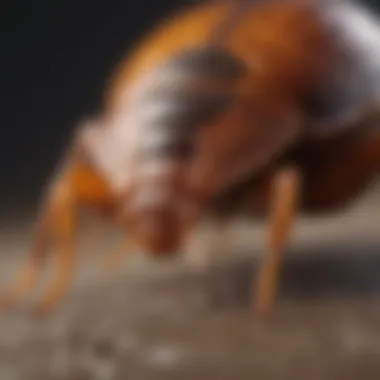
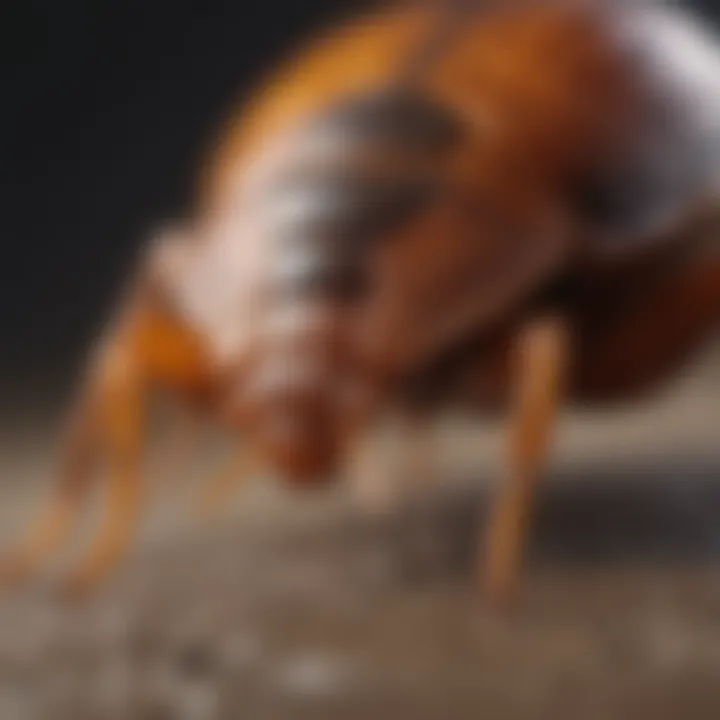
Ambulatory Locomotion
Bed bugs move using a method known as ambulatory locomotion. They do not possess wings nor the ability to jump, relying instead on their six agile legs for movement. Their body structure and design allow them to traverse various surfaces effectively. The legs are adapted for crawling over edges and crevices, where these insects often hide during daylight hours.
The speed at which they move can be quite startling when observed. Consequently, bed bugs can travel several feet within a short time when searching for meals. Interestingly, their keen agility permits them to navigate through small openings, increasing the likelihood of encountering human hosts or pets:
- Narrow Spaces: Bed bugs can squeeze through cracks as small as a credit card thickness.
- Climbing Skills: They are proficient at moving up and down furniture and walls, often landing on bedding.
- Distance Traveled: In a night, they may cover up to 100 feet if undisturbed.
They tend to be more active at night when their hosts are in repose, heightening their feeding success. Understanding this behavior can assist in setting traps around living spaces effectively.
Methods of Transportation Between Hosts
Transfer between hosts happens in various ways, given that bed bugs are recluse insects primarily feeding on blood. They seek refuge in places like hotel rooms, residences, and public transport, which may lead to visits in individuals' homes.
Their major transportation methods between hosts include:
- Human Actions: Adults or children can unwittingly transport these pests by carrying infested items, products, and even clothing from place to place.
- Luggage and Personal Belongings: Travel accessories are well-known avenues for their regional movements. After staying in infested locations, transferring luggage could introduce them into new environments.
- Reaching Nearby Living Features: They may also move among adjacent apartments, given the structural characteristics of housing complexes, enabling passages through vents and shared walls.
Effective pest management starts with awareness of these behaviors, treating affected surroundings promptly to hinder propagation.
Being informed improves the potential for prevention significantly, utilizing proper cleaned modes within households will help reduce risk to pets and family.
Life Cycle of Bed Bugs
Understanding the life cycle of bed bugs is essential for effective pest control and management. Bed bugs reproduce rapidly, leading to infestations that can grow quickly if the cycle is not interrupted. A comprehensive grasp of each developmental stage highlights the urgency in addressing infestations, and it aids in identifying and implementing proper treatments to mitigate their numbers and impact.
Stages of Development
The life cycle of a bed bug consists of several key stages: egg, nymph, and adult. This cycle can take as little as five weeks to complete under optimal conditions, such as warmth and a steady food supply. Each stage has unique characteristics that define what type of measures may be necessary to control their growth and presence.
- Egg: A female bed bug can lay hundreds of eggs in her lifetime. The eggs are small, oval-shaped, and typically white or translucent. These eggs hatch in about 6 to 10 days, providing an initial source of new pests to the environment.
- Nymph: After hatching, bed bugs enter the nymph stage. Nymphs are small and resemble adults but are lighter in color and a bit smaller. To mature, nymphs need blood meals to grow. They undergo five molts before reaching adulthood, and this stage reiterates the importance of regular inspections to find their hiding spots, usually in creases and folds of mattresses, furniture, or walls.
- Adult: The final stage is adult. Adult bed bugs measure about 5 to 7 mm in length and have a flattened, oval body. They are brown in color and are typically more recognizable. An adult can survive months without feeding, making immediate action crucial once identified.
Through understanding the distinct stages, individuals and pest control professionals can schedule treatments to coincide with the molting process and optimize measures to curtail their population effectively.
Feeding Habits and Nutrition
Bed bugs are primarily hematophagous, which means they feed on blood. Their feeding habits play a crucial role in their survival and proliferation. Adults and nymphs both require blood for growth, reproduction, and molting. Their feeding habits can impact infestations and the experiences of those living in proximity to them.
Bed bugs feed through a specialized mouthpart that acts like a straw, allowing them to draw blood from a host, typically at night when comfortable and undisturbed. During a feeding session, they can consume up to twice their body weight in blood, a sight that can be both alarming and fascinating. Feeding can last anywhere from three to ten minutes.
Key Points on Feeding Habits:
- Frequency: Adult bed bugs typically feed every 5 to 10 days. However, nymph and adult females may require more frequent meals during reproductive cycles.
- Hidden Feeding: Bed bugs tend to feed at night and may remain hidden during the day, making it a challenge to notice their presence.
- Host Selection: While bed bugs prefer humans, they can feed on animals if necessary. Larger populations might have more frequent contact with various hosts.
The study of bed bug feeding habits assists in understanding their survival tactics and will help with more targeted strategies in pest management. Recognizing this will also empower individuals to identify potential issues and initiate reactivity to minimize contact and lessen the likelihood of devastating infestations.
Common Myths Surrounding Bed Bugs
Understanding common myths surrounding bed bugs is crucial for informed pest management. Misunderstandings can lead to improper treatments and increased anxiety about infestations. Clear facts help individuals differentiate between real threats and exaggerated stories. Laying a solid knowledge foundation ultimately aids in effective bed bug strategies.
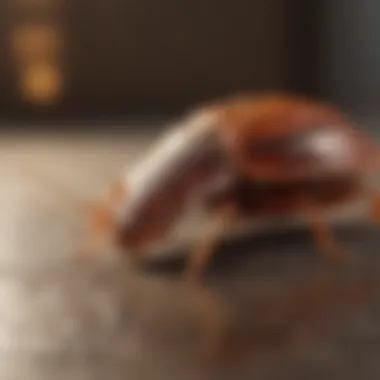
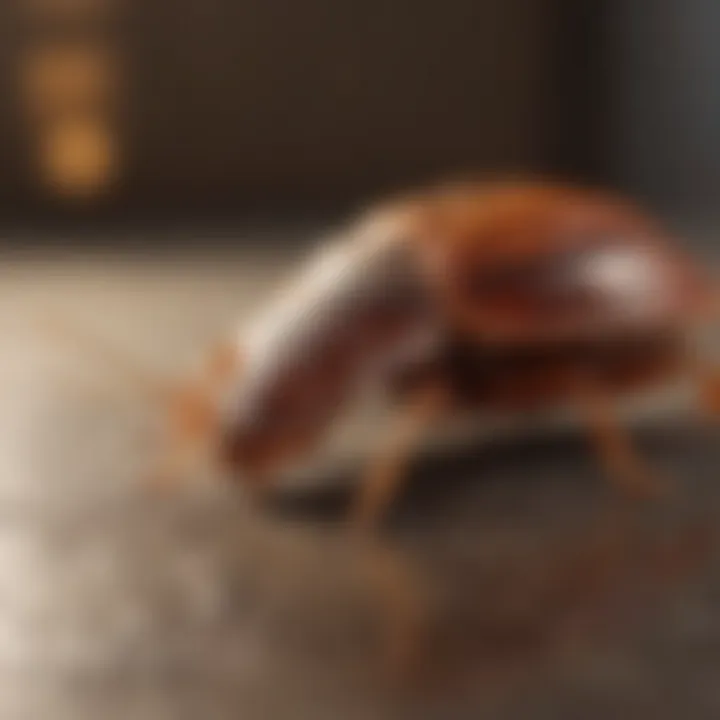
Fact vs.
Fiction
Many people mistake bed bugs for other pests or confuse them with more harmful insects. One prevalent myth is that bed bugs can live in clean environments. In reality, cleanliness plays a role but does not guarantee a bed bug-free space. These pests do not depend heavily on dirt or clutter to survive, however, their preferred hiding places often coincide with areas of human habitation. You may hear claims saying that bed bugs can jump or fly. This is false; despite their ability to maneuver with agility, their body structure lacks any wings for flight.
Another myth worth addressing is the idea that bed bugs are limited to infesting beds alone. While beds constitute a common breeding ground, bed bugs seek any proximity to human hosts for feeding. They thrive in furniture, carpets, and other sheltered areas, making it necessary to take wider precautions. Consequently, proper understanding dispels fears and supports clear actions against infestations.
Understanding Their Role in the Ecosystem
Bed bugs serve specific functions in their ecosystems. Although considered parasites, it's valuable to note their position within ecological interactions. They appear in food webs and actively participate in their environments. Their primary role includes feeding off blood from mammals and occasionally birds.
This behavior contributes to the biological diversity omnipresent in various habitats. When soils host diverse species, including potential species interaction like this, it can highlight ecological balance at deeper levels. However, their cohabitation with humans adds a layer of complexity. Crucially, bed bugs highlight the necessity for sanitation in dwellings. Thanks to their ability to travel and hitchhike on clothing or luggage, the invasive nature requires integrated control approaches to effectively manage ecological pplications to their existence and minimize human disturbance.
In summary, addressing myths fosters a more profound grasp on bed bugs increasing awareness regarding pest control. The clear facts help frame their natural role in the ecosystem, spacing a bridge between human utilization and natural habitats. To learn more about ecological dynamics, visit Wikipedia or Encyclopedia Britannica.
Effective Bed Bug Management Strategies
Understanding bed bug management is crucial for effectively controlling these persistent pests. Knowledge of strategies tailored to deter bed bugs can reduce infestations and minimize stress for affected individuals. This section outlines preventive measures, treatment options, and the role of professional pest control services. By implementing a combination of these strategies, one can manage bed bug issues more effectively.
Preventive Measures
Preventive measures play a significant role in keeping bed bugs at bay. A holistic approach can help avoid introductions, especially in environments where travel occurs frequently. Here are some effective preventive practices:
- Regular Inspections: Periodically inspect bedding, mattresses, and furniture for any signs of bed bugs. Early detection can alleviate larger infestations.
- Protective Covers for Mattresses: Using bed bug-proof encasements on mattresses and box springs can secure against bed bugs that seek shelter.
- Vacuuming: Thorough vacuuming of carpets, floors, and crevices is important. Dispose of vacuum contents immediately to avoid reinfestation.
- Reduced Clutter: Maintaining a clutter-free space can help limit bed bug hideouts and simplifies regular inspections.
Following preventive measures is the first line of defense against bed bugs. A proactive stance is more effective than reactive approaches.
Treatment Options
When bed bugs are present, several treatment options may be effective. It's important to understand that different methods may be required based on the severity of the invasion. Here are common treatment avenues:
- Heat Treatment: This method involves raising the temperature of an infested area to a level that is lethal to bed bugs. Professional services often provide this option, achieving thorough eradication.
- Chemical Treatments: There are various insecticides formulated for bed bugs. Always follow instructions carefully and consider any potential health impacts on residents.
- Diatomaceous Earth: This naturally occurring product can be applied across infested areas. Its effectiveness is due to its ability to dehydrate bed bugs that come into contact with it.
Each option carries its pros and cons, and it is essential to assess which treatment fits best based on individual circumstances.
Professional Pest Control Services
When managing effective strategies, engaging professional pest control services can make a considerable difference. Professionals come equipped with extensive knowledge and tools necessary for thorough management. Here’s what they offer:
- Expert Assessment: Trained exterminators can identify the full extent of an infestation and recommend an appropriate action plan.
- Integrated Pest Management: Many pest control firms use a combination of techniques customized to the threats present, often using eco-friendly products if desired.
- Long-Term Solutions: Yearly inspections and regular monitoring can prevent bed bug issues from arising again in the future.
Ultimately, enlisting the expertise of professionals can streamline the process of eliminating bed bugs, allowing affected individuals to reclaim their environments more quickly and effectively.
Culmination
Understanding bed bugs and their characteristics is essential for effective pest prevention and management. This article clarifies that bed bugs do not have wings and cannot fly, which is a misconception often held. Detailing their physical characteristics and explanations surrounding their movement helps to paint a clear picture.
The significance of comprehending the life cycle of bed bugs, as namaned in previous sections, assists in identifying their habitats and typical behaviors. This understanding can lead to better detection of infestations early, which is crucial in controlling their spread.
Key Takeaways
- Bed bugs rely on crawling rather than flight for movement.
- Their evolutionary path has favored survival through reproduction rather than mobility.
- The myths surrounding bed bugs can often lead to unnecessary anxiety, but facts dispel these misconceptions.
Effective management strategies are paramount in dealing with infestations. Approaches such as routine inspections, preventive practices, and knowledge of treatment options should be clearly understood. For all individuals, including owners, educators, and those interested in wildlife, knowing these facts and strategies is highly beneficial.
In summary, this article serves to equip readers with vital insights about bed bugs. It bridges a gap in knowledge that can empower more informed decisions regarding pest control efforts. Awareness of how bed bugs operate ensures better preparation and action against these unwelcome pests.







